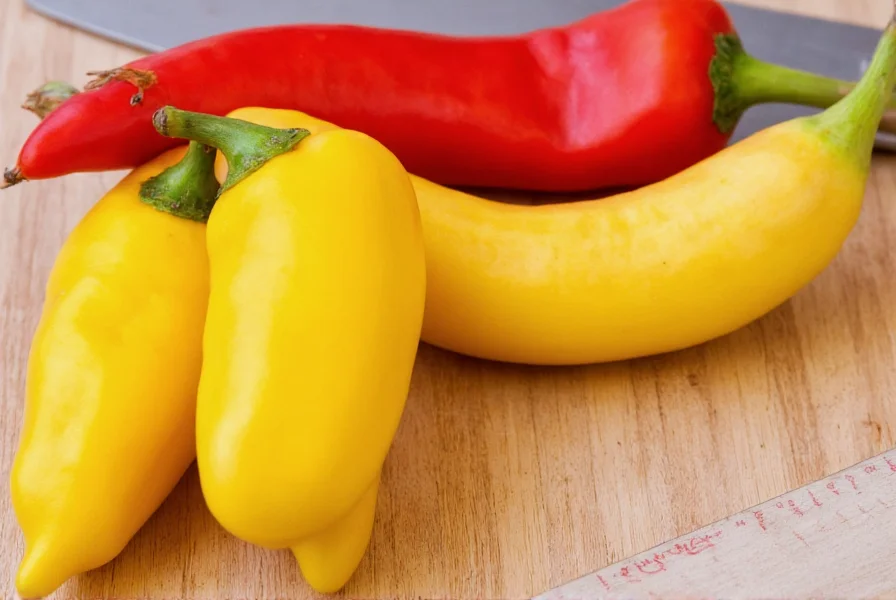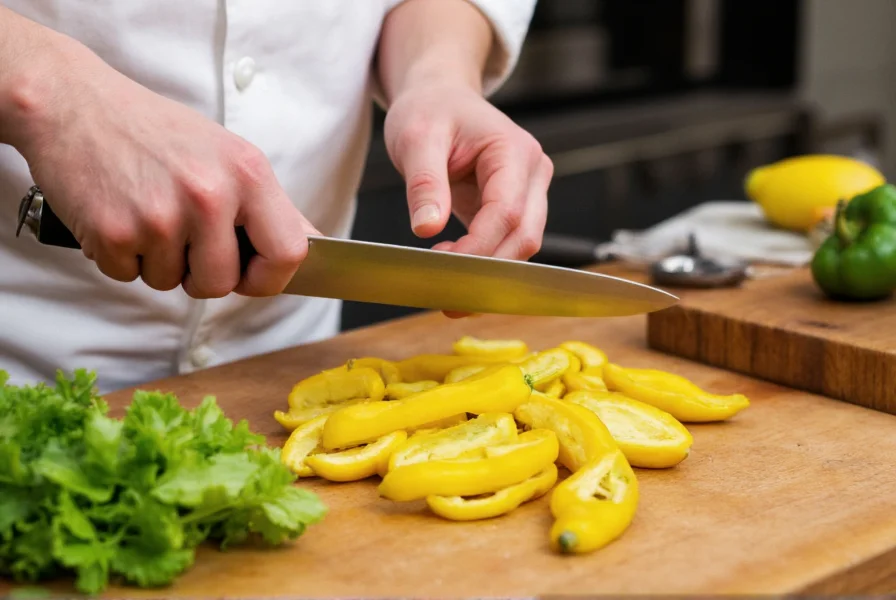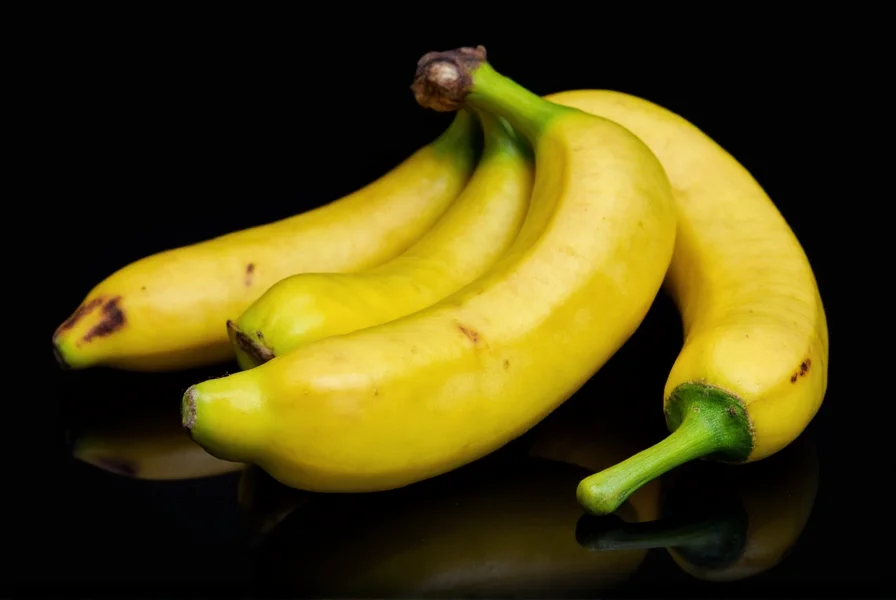Banana peppers earn their name from their distinctive curved shape and vibrant yellow color, though they mature to red and orange hues. These versatile peppers feature prominently in sandwiches, salads, and pickled preparations thanks to their mild heat and sweet-tangy flavor profile. Unlike their spicier relatives, banana peppers deliver minimal heat sensation while contributing substantial flavor to dishes.
The Scoville scale, developed by pharmacist Wilbur Scoville in 1912, measures capsaicin concentration—the compound responsible for chili pepper heat. Originally determined through human taste testing, modern laboratories now use high-performance liquid chromatography for precise measurements. Understanding where banana peppers fall on this scale helps home cooks and professional chefs make informed ingredient choices.
Understanding Banana Pepper Heat Variability
Several factors influence the actual heat level you'll experience with banana peppers:
- Ripeness stage: Yellow banana peppers typically measure closer to 0 SHU, while fully mature red varieties may reach up to 500 SHU
- Growing conditions: Soil composition, temperature fluctuations, and water availability affect capsaicin production
- Individual variation: Even within the same plant, heat levels can differ between peppers
- Preparation method: Removing seeds and membranes reduces any detectable heat
Comparing Banana Peppers to Common Varieties
| Pepper Variety | Scoville Heat Units | Heat Comparison |
|---|---|---|
| Banana Pepper | 0-500 SHU | Mild, sweet flavor with negligible heat |
| Bell Pepper | 0 SHU | No heat, purely sweet |
| Pepperoncini | 100-500 SHU | Slightly tangier with similar mild heat |
| Jalapeño | 2,500-8,000 SHU | Significantly hotter (5-16x banana pepper) |
| Serrano | 10,000-23,000 SHU | 20-46x hotter than banana peppers |
Many home cooks confuse banana peppers with pepperoncinis due to their similar appearance and mild heat profiles. While both register between 0-500 SHU, banana peppers tend to be slightly sweeter with thinner walls, whereas pepperoncinis offer a more vinegar-like tang commonly associated with pickled varieties.

Culinary Applications of Mild Heat Peppers
The gentle heat profile of banana peppers makes them exceptionally versatile in the kitchen. Their flavor shines in applications where stronger peppers would overwhelm other ingredients:
- Pickling: Banana peppers maintain their crisp texture and develop complex flavors when pickled, becoming staples in antipasto platters and sandwich bars
- Stuffed preparations: Their curved shape and mild flavor provide ideal vessels for fillings without competing with other ingredients
- Fresh applications: Sliced banana peppers enhance salads, pizzas, and sandwiches with color and subtle flavor
- Cooked dishes: They retain their sweet notes when sautéed or roasted, adding depth to sauces and stews
When substituting banana peppers in recipes calling for other mild peppers, consider their unique flavor profile. Unlike the earthier pepperoncini, banana peppers offer brighter, fruitier notes that complement Mediterranean and Latin American cuisines particularly well. For gardeners, growing banana peppers provides reliable yields of versatile peppers suitable for eaters of all heat tolerances.

Addressing Common Misconceptions
Several misconceptions surround banana pepper heat levels. Some consumers report experiencing noticeable heat from banana peppers, which typically indicates one of three scenarios:
- Misidentification: Confusing banana peppers with Hungarian wax peppers, which start mild but can reach 15,000 SHU when mature
- Genetic variation: Certain cultivars may produce unexpectedly hot specimens due to cross-pollination
- Individual sensitivity: People with heightened capsaicin sensitivity may detect heat others don't perceive
When selecting banana peppers at the grocery store, look for firm, glossy specimens without wrinkles or soft spots. Yellow varieties generally offer the mildest experience, while red and orange peppers provide slightly more heat along with increased sweetness from additional ripening.
Are banana peppers hotter than jalapeños?
No, banana peppers are significantly milder than jalapeños. Banana peppers range from 0-500 Scoville Heat Units (SHU), while jalapeños measure 2,500-8,000 SHU—making them 5 to 16 times hotter than the maximum banana pepper heat level.
Can yellow banana peppers be hot?
Most yellow banana peppers register at the lowest end of their heat range (0-100 SHU), making them extremely mild. While rare genetic variations or growing conditions might produce slightly hotter specimens, yellow banana peppers generally deliver negligible heat with predominant sweet and tangy flavors.
How do banana peppers compare to pepperoncinis in heat level?
Banana peppers and pepperoncinis share nearly identical Scoville ranges (0-500 SHU), but they differ in flavor profile. Banana peppers taste sweeter with fruitier notes, while pepperoncinis offer a more vinegar-like tang, especially in pickled forms. The heat sensation between these two mild peppers remains virtually indistinguishable.
Why do some banana peppers taste hotter than others?
Variations in banana pepper heat come from ripeness (red peppers are hotter than yellow), growing conditions, and individual plant genetics. Stress factors like inconsistent watering or temperature fluctuations can increase capsaicin production. Removing seeds and membranes also significantly reduces any detectable heat.
Are red banana peppers significantly hotter than yellow ones?
Red banana peppers typically measure toward the higher end of the 0-500 SHU range (200-500 SHU) compared to yellow varieties (0-200 SHU). While technically hotter, the difference remains subtle—most people would describe red banana peppers as having slightly more pronounced pepper flavor rather than noticeably increased heat.











 浙公网安备
33010002000092号
浙公网安备
33010002000092号 浙B2-20120091-4
浙B2-20120091-4